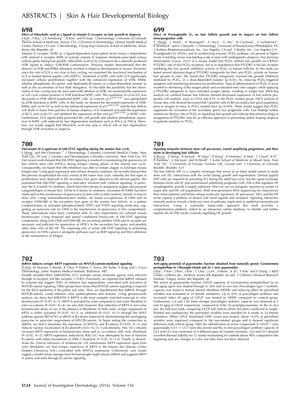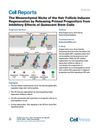Signaling Networks Between Stem Cell Precursors, Transit Amplifying Progenitors, and Their Niche in Developing Hair Follicles
April 2016
in “
Journal of Investigative Dermatology
”

TLDR Blocking Prostaglandin D₂ (PGD₂) could help treat hair loss.
The document reports a study that investigated the effects of Prostaglandin D₂ (PGD₂) on hair growth, revealing its inhibitory role and potential as a therapeutic target for alopecia. The study demonstrated that antagonists of the PGD₂ receptor (PTGDR2) could counteract the negative effects of PGD₂ on hair growth in a dose-dependent manner. This was evidenced by a reduction in cell death and sustained proliferation of keratinocytes. Application of PGD₂ on mice resulted in a shorter growth phase (anagen) and quicker progression to the regression phase (catagen), while PTGDR2 antagonists had the opposite effect, leading to longer hair. Additionally, PGD₂ was found to decrease the expression of markers for hair follicle progenitor cells and reduce the number of proliferating cells in the hair germ, indicating that PGD₂ impedes the activation of hair progenitor cells. These findings suggest that blocking PGD₂ signaling could be a viable treatment strategy for alopecia.
